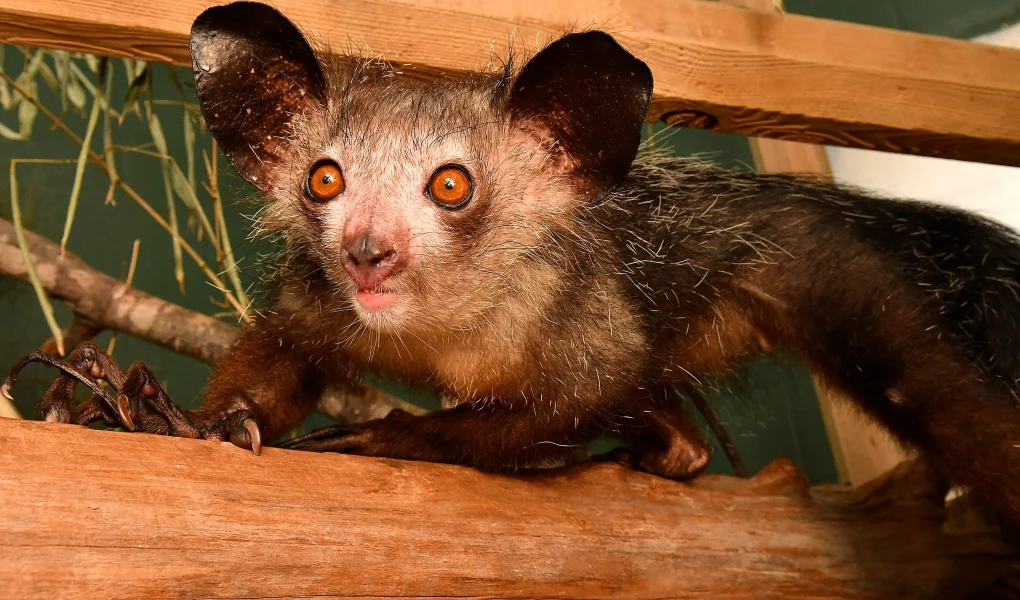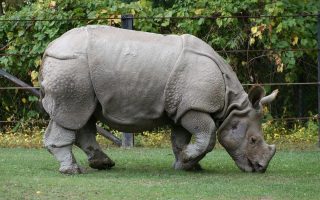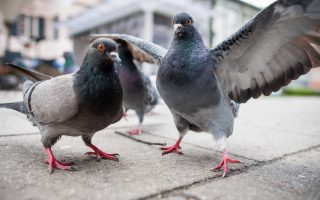lareddepathways.com – The aye-aye (Daubentonia madagascariensis) is a unique and enigmatic species of lemur native to Madagascar. Known for its unusual appearance and behavior, the aye-aye has intrigued scientists and wildlife enthusiasts for centuries. Often associated with superstition and myth, this nocturnal primate is both fascinating and misunderstood. Its distinctive features, along with its ecological role, make the aye-aye a subject of study and admiration, despite its status as one of the world’s most endangered primates.
Physical Characteristics and Unique Features
The aye-aye is immediately recognizable due to its striking physical characteristics. It has large, round eyes adapted for nocturnal vision, allowing it to see in low light conditions as it forages during the night. Its long, bushy tail, which is larger than its body, adds to its unique appearance and is often used for balance while navigating through the trees.
However, the most remarkable feature of the aye-aye is its elongated middle finger. This specialized finger, which can be up to three times the length of its other fingers, is used for a highly specialized feeding technique known as “percussive foraging.” The aye-aye taps on tree bark with its finger to detect hollow spaces where insects such as grubs and larvae may reside. Once it locates a potential food source, the aye-aye uses its sharp, elongated finger to extract the prey, showcasing its incredible dexterity and specialized adaptation.
In addition to its finger, the aye-aye also possesses large, rodent-like teeth that grow continuously throughout its life, similar to those of rodents like squirrels. These teeth are used to gnaw through tree bark to reach the insects hidden beneath.
Habitat and Distribution
The aye-aye is endemic to Madagascar, meaning it is found nowhere else in the world. It inhabits a variety of forests across the island, from tropical rainforests to dry deciduous forests. The species is arboreal, spending most of its time in the trees, where it forages for food, builds nests, and avoids predators.
Madagascar, known for its unique biodiversity, is home to a wide variety of endemic species, many of which, like the aye-aye, have evolved in isolation over millions of years. However, as human activities such as deforestation and habitat destruction have increased, the aye-aye’s habitat has been significantly reduced, placing the species at risk of extinction.
Behavior and Diet
Aye-ayes are nocturnal animals, meaning they are active at night and sleep during the day. They are solitary by nature and tend to forage alone, though they may come together during the mating season. Their diet primarily consists of insects, particularly grubs, which they extract from the bark of trees using their specialized middle finger. They also eat fruits, seeds, nectar, and fungi, and may occasionally consume small vertebrates.
One of the most fascinating aspects of the aye-aye’s behavior is its unique foraging method. As it taps on tree trunks with its long finger, it listens for the sound of the hollow spaces created by insects inside the bark. This process, known as “auditory foraging,” allows the aye-aye to pinpoint the exact location of its prey, which it then extracts using its finger.
In addition to foraging, the aye-aye is known to build nests in the forks of trees. These nests are typically made from leaves and twigs and provide a safe place for the primate to rest during the day.
Reproduction and Life Cycle
Aye-ayes have a slow reproductive rate, with females giving birth to a single offspring after a gestation period of around 170 days. The young are born with their eyes open and are able to cling to their mother’s fur shortly after birth. For the first few months of life, the infant relies heavily on its mother’s care, but as it grows, it becomes more independent and begins to learn the foraging techniques that are critical to survival.
Aye-ayes reach sexual maturity at around 2 to 3 years of age, but their reproductive success is limited by the fact that they are solitary animals. Mating usually occurs in the wild during specific periods, and the young are raised solely by the mother, who is very protective of her offspring.
Conservation Status and Threats
The aye-aye is classified as “Endangered” by the International Union for Conservation of Nature (IUCN). It faces numerous threats, with habitat destruction being the primary cause of its declining population. Madagascar’s forests are being cleared for agriculture, logging, and human development, which reduces the available habitat for the aye-aye and other endemic species.
In addition to habitat loss, the aye-aye is also threatened by hunting and persecution. In Malagasy folklore, the aye-aye is often viewed as a bad omen, and it is believed that encountering one could bring misfortune or death. This superstition has led to the killing of aye-ayes in some areas, further exacerbating their endangered status.
Conservation efforts are underway to protect the aye-aye and its habitat. Several protected areas in Madagascar have been established, where the species can live without the threat of deforestation. Additionally, researchers are studying the aye-aye’s behavior, ecology, and reproductive patterns to better understand how to safeguard its future.
The Aye-Aye’s Role in Ecosystems
The aye-aye plays an important role in its ecosystem by acting as a natural pest control agent. By feeding on insect larvae and other invertebrates that live beneath tree bark, the aye-aye helps to regulate insect populations and prevent damage to the trees. This ecological role is essential for maintaining the health of Madagascar’s forests, which are home to countless other species of plants and animals.
Additionally, the aye-aye’s foraging behavior helps in seed dispersal. As it feeds on fruits and nectar, it inadvertently aids in the propagation of various plant species, contributing to the biodiversity of Madagascar’s unique ecosystems.
Conclusion
The aye-aye is one of the most distinctive and mysterious creatures in the animal kingdom. With its remarkable physical features, unique behavior, and important ecological role, the aye-aye captures the fascination of anyone who encounters it. Unfortunately, its endangered status means that the future of this extraordinary primate is uncertain, and conservation efforts are critical to ensuring its survival.
By continuing to protect its natural habitat, challenging harmful superstitions, and supporting conservation initiatives, we can help secure a future for the aye-aye and the biodiversity of Madagascar. As one of the world’s most remarkable and misunderstood creatures, the aye-aye deserves our attention and protection for generations to come.




